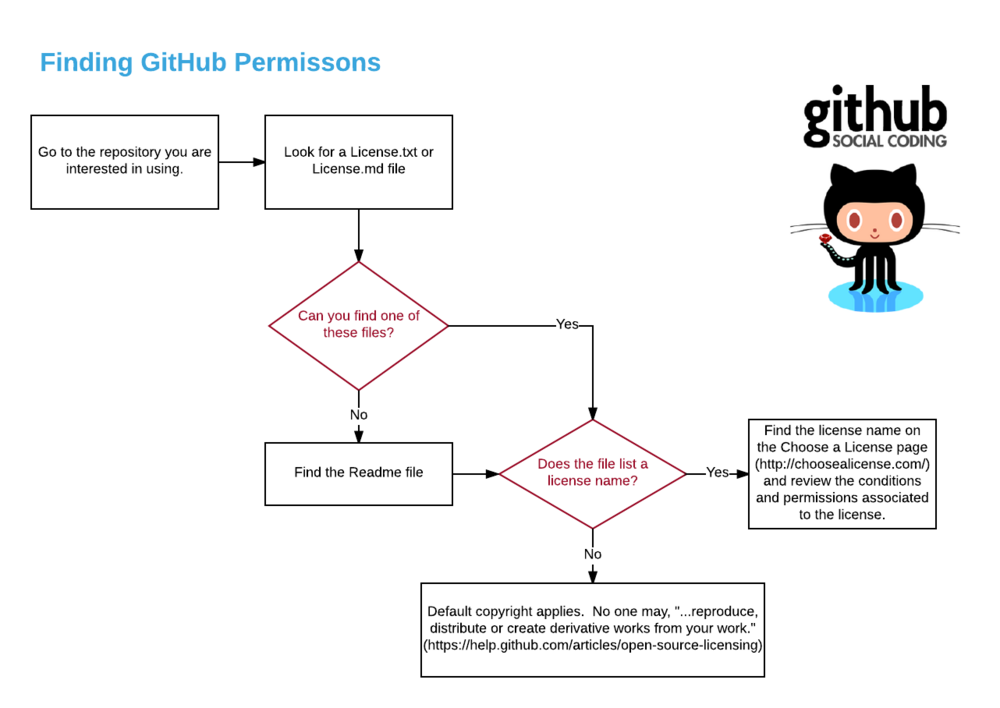Library:OERR/User Guides/Curating/Using
Identifying Permissions
When adopting a resource, you need to be aware of how the resource can be used. This will require you to look for rights and permissions.
Rights and permissions outline how work can be used, including produced, copied, performed, published, adapted, translated or telecommunicated. It's important to remember that just because an item is available online, it does not give an individual the right to use the work however they choose.
The following is an example of finding permissions in GitHub.
GitHub - Identifying Permissions
GitHub is a web-based Git repository hosting service. It offers both private and free accounts which are (usually) used to host open-source software project.
While the purpose of GitHub is to house open-source software, the rights and permissions to use the content in GitHub remains in the hands of the creators. This means when adopting GitHub content, you need to be aware of how the resource can be used. This will require you to look for rights and permissions.
Rights and permissions outline how work can be used, including produced, copied, performed, published, adapted, translated or telecommunicated. It's important to remember that just because an item is available online, it does not give an individual the right to use the work however they choose.
The following outlines how you can find the permissions and conditions of use for GitHub content.
Adapting and Adopting Open Content
If you are remixing, adapting, or modifying open source and/or openly licensed content, review the following material:
- Refer to the http://choosealicense.com/licenses/ page noted above for an overview of the permissions, conditions and restrictions on the most commonly used licences. In the Permissions column look for terms like ‘modification’ and ‘distribution’. Review the Conditions column for terms like ‘Same license’ and ‘State changes’. Hover over the statements for a full explanation.
- More licences can be reviewed on the Appendix page, http://choosealicense.com/appendix/ which also provides a useful Legend of the various permissions, conditions and limitations. In the latter category note the ‘Trademark Use’ limitation and its applicability in the Legend.
If you cannot find the "Terms of Use" or "Licence" for an item, contact the Scholarly Communications and Copyright Office for assistance.
Copyright and Open Education Resource Repositories
When building an Open Educational Resource Repository (OERR) that incorporates content from the Internet, publications, sound recordings, video and other sources, it is important to keep in mind that much of this material is subject to copyright law and use licences.
Copyright at UBC, in co-operation with the UBC Library, has created a series of five videos with accompanying text that provide information on the appropriate use of these materials in the development of an OERR. The videos explain the basics of Canadian copyright law in an educational setting, and delve into matters of using content that complies with laws and licences, including permissive licences like Creative Commons, as well as details on seeking permission to use content. Each video concludes with a set of links to webpages on the Copyright at UBC site that deliver more information and clarity about the use of copyrighted content in the Canadian educational context.
View the five "Copyright and Open Education Resource Repositories (OERR)."
